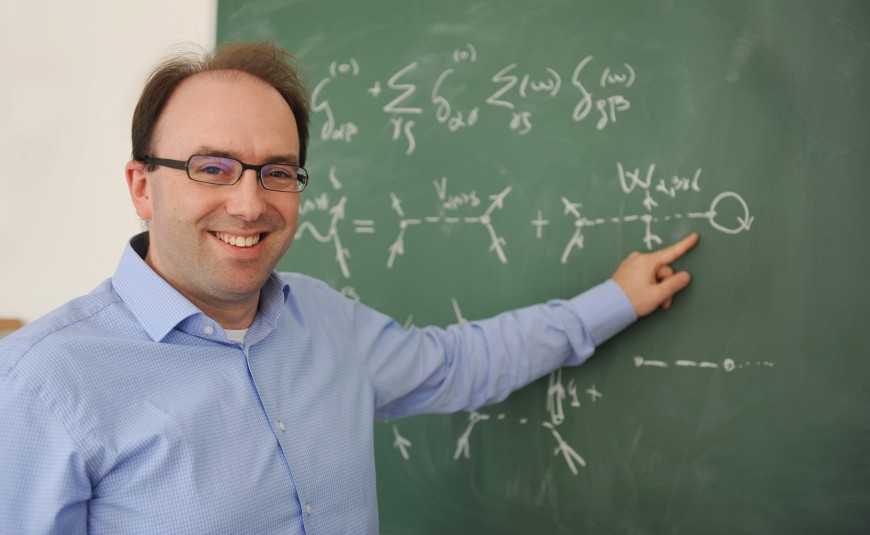Limits of atomic nuclei predicted
Scientists simulate large region of the chart of nuclides
2021/01/13
Novel calculations have enabled the study of nearly 700 isotopes between helium and iron, showing which nuclei can exist and which cannot. In an article published in Physical Review Letters, scientists from TU Darmstadt, the University of Washington, the Canadian laboratory TRIUMF, and the University of Mainz report how they simulated for the first time using innovative theoretical methods a large region of the chart of nuclides based on the theory of the strong interaction.

Atomic nuclei are held together by the strong interaction between neutrons and protons. About ten percent of all known nuclei are stable. Starting from these stable isotopes, nuclei become increasingly unstable as neutrons are added or removed, until neutrons can no longer bind to the nucleus and “drip” out. This limit of existence, the so-called neutron “dripline”, has so far been discovered experimentally only for light elements up to neon. Understanding the neutron dripline and the structure of neutron-rich nuclei also plays a key role in the research program for the future accelerator facility FAIR at the GSI Helmholtz Centre for Heavy Ion Research in Darmstadt.
In a new study, “Ab Initio Limits of Nuclei,” published in the journal Physical Review Letters as an Editors' Suggestion with an accompanying synopsis in APS Physics, Professor Achim Schwenk of TU Darmstadt and a Max Planck Fellow at the MPI for Nuclear Physics in Heidelberg, together with scientists from the University of Washington, TRIUMF and the University of Mainz, succeeded in calculating the limits of atomic nuclei using innovative theoretical methods up to medium-mass nuclei. The results are a treasure trove of information about possible new isotopes and provide a roadmap for nuclear physicists to verify them.
The new study is not the first attempt to theoretically explore the extremely neutron-rich region of the nuclear landscape. Previous studies used density functional theory to predict bound isotopes between helium and the heavy elements. Professor Schwenk and colleagues, on the other hand, explored the chart of nuclides for the first time based on ab initio nuclear theory. Starting from microscopic two- and three-body interactions, they solved the many-particle Schrödinger equation to simulate the properties of atomic nuclei from helium to iron. They accomplished this by using a new ab initio many-body method – the In-Medium Similarity Renormalization Group –, combined with an extension that can handle partially filled orbitals to reliably determine all nuclei.
Starting from two- and three-nucleon interactions based on the strong interaction, quantum chromodynamics, the researchers calculated the ground-state energies of nearly 700 isotopes. The results are consistent with previous measurements and serve as the basis for determining the location of the neutron and proton driplines. Comparisons with experimental mass measurements and a statistical analysis enabled the determination of theoretical uncertainties for their predictions, such as for the separation energies of nuclei and thus also for the probability that an isotope is bound or does not exist (see figure).
The new study is considered a milestone in understanding how the chart of nuclides and the structure of nuclei emerges from the strong interaction. This is a key question of the DFG-funded Collaborative Research Center 1245 “Nuclei: From Fundamental Interactions to Structure and Stars” at the TU Darmstadt, within which this research was conducted. Next, the scientists want to extend their calculations to heavier elements in order to advance the input for the simulation of the synthesis of heavy elements. This proceeds in neutron-rich environments in the direction of the neutron dripline and occurs in nature when neutron stars merge or in extreme supernovae.
Schwenk/feu
Schwenk/feu


